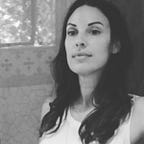My Connection with John Cohen
John Cohen was always looking to connect. He was a person in search of something, always. And he managed to find it even if he didn’t know what he was searching for. I’m the same way. That’s how we found each other. He died yesterday at 87, but he already seemed old when we met. Maybe because I was so young.
I was a beat reporter at the time. I met him at a town board meeting. I had no idea who this white-haired, bearded man with a guitar was. I just knew he wanted to sing a protest song at the meeting, in a town where the environmental laws were much better than the measures taken to enforce them. The board had “important business” to discuss so they told him to sit down. I knew I wasn’t supposed to get involved, but it’s the one time in my career as a journalist that I interfered in the event I was covering. I insisted that they let him play, and they did. In the parking lot afterward, we stood together and he thanked me. He invited me to his house. I went.
His house was filled with books, woodstoves, musical instruments and famous photographs of people like Bob Dylan, Jerry Garcia and a generation of Beat Poets.
“I love these pictures,” I said.
“I took them,” he responded.
He even took the dreamy photograph of Bob Dylan and Suze Rotolo on the cover of the album The Freewheelin’ Bob Dylan. How did he know all of these people — much less capture them in such raw candids? John was a founding member of The New Lost City Ramblers, a musicologist and brother-in-law of Pete Seeger. He was a little bit older than the relatively unknown musicians and poets he befriended. They looked up to him and he taught and inspired them.
John took me as his plus-one to see the Martin Scorcese documentary, No Direction Home. It was on that night that I met Ric Ocasek, who also died this week. I was the only person in attendance who wasn’t Leonardo DeCaprio level famous.
“Yet,” John laughed. “Get on the red carpet.”
Aside from Bob Dylan, John was the most interviewed person in the film. He didn’t mention any of this at dinner beforehand, when we ate raw oysters on the halfshell with horseradish.
“I’ve never had a raw oyster in my life!” he said.
He was full of life. He came to my house and we played music and sang. In those days I sang all the time, and fortunately for me, I can also play all musical instruments, just not the way they are meant to be played. John didn’t care. We improvised, and we made some great music together. I spent entire nights like this, picking up anything that would make a sound and playing along with him. I listened to his many stories. He was a supporter of my writing and creativity, and in him, I found a kindred spirit. The world was an endless source of mystery and creativity for him. He inspired me to travel.
As John and I became friends, I learned more about his work, like how he had been returning to Peru for half a century to take photographs. From the publisher’s description of his book: John Cohen is a photographer, musician and filmmaker who has cultivated a fifty-year long fascination with the people, cultures and landscape of Peru. Cohen took his first photographs in Peru in 1956 and has returned many times since to continue documenting, adding musical and film recordings to his still images. Cohens photographs, stored for years in boxes in a barn near his home, and the music, today archived at the Smithsonian Institute, have not been published in their entirety until now. Past Present Peru combines photographs, textiles, music and film in an ambitious book object. The photographs are for Cohen a fragmented collection of visual insights, a record of deepening awareness that depicts the diversity of Peruvian life including religious festivals, potato farming, and the recent introduction of hydroelectricity. The textiles, reproduced in luscious colour, embody pre-Columbian craft traditions more than 5,000 years old. Cohen began recording music in Peru in 1964, using a portable tape recorder to capture performances wherever he could: at festivals, in villagers homes, even waiting at a bus stop. Cohen’s films are about a sense of things that werent expressed in words, and are themselves a unique historical record.
I never forgot John’s comment about how Peruvian shamans didn’t used to wear wristwatches, and how strange it was to see shamans he once photographed as small children.
I learned a lot of what I know about time, space and art from John Cohen, once a stranger who wanted to sing a protest song at a meeting, to fight against environmental abuses and bureaucratic malfeasance. I’m so happy that I said yes to his invitation, and so sorry to see him leave our world.
